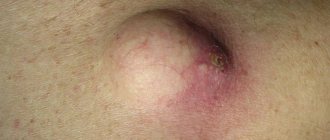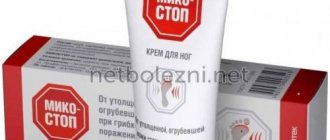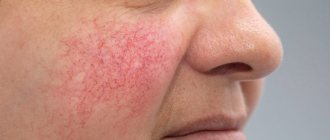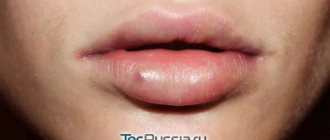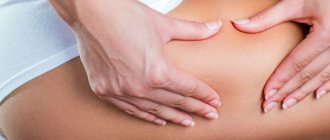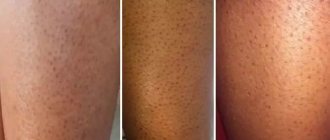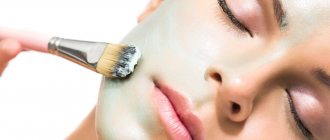Linen louse is the popular name for body louse, which is a subspecies of the more common human louse. The peculiarity of the body louse is its ability to live not on the scalp, but on clothing. Body lice have special adaptations in their bodies that make the habitation of these insects on clothing more convenient.
This subspecies of lice is not capable of living on the head, but is capable of interbreeding with other lice. The name “linen louse” was formed due to the main settlement and residence of this type of insect on underwear.
This habitat gives them easy and quick access to the body, which is a necessary source of blood. Linen lice can be called fastidious insects - parasites to the environmental conditions that surround them.
You can also trace the dependence of linen lice on the lifestyle that the infected person leads. If you are familiar with the characteristics of body lice, you can remove them from the body and clothing in a short time without the use of poisonous drugs.
What kind of parasite is a body louse?
Lice are divided into 3 types:
- pubic;
- head;
- wardrobe
What all types of lice have in common is rapid reproduction. At the same time, they create discomfort for the infected person and are carriers of infections.
The linen louse is small in size with a thickening in the center of the body. The length of an adult is 3-5 mm . The color is light gray or light yellow. There are no wings - this prevents them from moving long distances. The larvae of linen or body lice resemble adult individuals, only of a miniature size of 1-2 mm. Full development occurs after 3 moults have passed.
The optimal reproduction process occurs at high temperatures up to 30˚ C. Low temperatures (15˚ C) have a negative effect on reproduction and growth. The killing temperature for insects is plus 60˚ C and below minus 13.
The lifespan of males is up to 30 days. Whereas females exist for 45 days. During this period, one female lays 140 nits . As soon as the larvae emerge from the egg, they begin to suck blood once a day. At the same time, the first molt occurs, the second - after 5 days, the third - after 8.
The complete growth cycle from egg to subsequent reproduction is 16 days. The process of reproduction is repeated again. Two months are enough to increase the size of the colony several hundred times . Therefore, it is necessary to begin the fight against parasites in a timely manner.
Photo
Lice: photo
Due to their small size and mobility, it is difficult to see the parasites in detail, but it is still possible. If you suspect that you have lice, a photo and a detailed description of their appearance will help you either dispel your suspicions or confirm them.
- Head lice have a pear-shaped, flat abdomen with a pointed body tip.
- Pubic lice have an abdomen similar in shape to a circle.
- The abdomen of body lice is shaped like an almond.
- Head and body lice are almost transparent, with a light brown tint; when saturated with blood, it is visible inside and the insect becomes brownish-burgundy.
- Pubic lice are dark brown.
- All three species have 6 legs and short thick whiskers on the head.
- Lice eggs are called nits; the parasites attach them to the base of hair or threads in their habitats.
- The size of the eggs does not exceed 0.7–0.8 millimeters.
- Lice larvae look like smaller copies of adult insects; as they grow, they simply increase in size.
What is body lice?
The difference between body lice and other diseases is that lice do not live on the body, but hide in the seams of clothing. Although, without humans they do not exist. After all, they feed exclusively on the blood of the owner. Insects suck on it 4 times a day.
It is at the moment of hunger that parasites leave their home and move onto the body. Having had enough, they crawl back into clothes or bedding. The appearance of a well-fed parasite is very similar to a flea. Since the abdomen becomes burgundy in color, but they do not know how to jump, but crawl slowly.
Outbreaks of linen lice mark times during military operations. During this period, people are not able to properly monitor their body hygiene, and clothes are changed at the wrong time. IDPs who have to live in tents with a large number of people are also susceptible to this disease.
Reasons for appearance
When asked what linen lice are and how to get rid of them, you should not immediately advise general cleaning. Where do they come from? Here are the most popular places:
- A store where clothing is tried on.
- Hotel room.
- Going to visit.
- Any public transport where there is frequent contact with various strangers.
- Various tourist trips, during which you have to share one tent with someone.
It should be noted that these parasites are very hardy. They can survive even a couple of days without their usual environment. After just a couple of individuals enter their familiar environment, their immediate reproduction begins. Those who do not make do with the same underwear, have a fairly large wardrobe, and also change their clothes as often as possible are reliably protected from these annoying parasites. Thus, if a louse lives on clothing, it will die of hunger for a certain time if the person does not put this thing on again. In almost all cases, prisoners, as well as people without a fixed place of residence, have linen lice. Therefore, you should be very careful when dealing with such people.
Body lice bites
Linen lice affect the part of the body where there is no hair:
- groin;
- stomach;
- axillary areas;
- shoulders;
- neck;
- buttocks;
- small of the back;
- breast;
- upper back;
- waist.
Bite symptoms:
- the appearance of bluish spots on the body;
- headache;
- nausea;
- nervousness;
- itching near the bitten area;
- elevated temperature;
- intestinal disorder;
- allergy;
- pustules;
- healing of the bite after 4 days.
Photo
Complications of pediculosis
- Timely identified lice on any part of the body are easily removed, for which there are many extremely safe and effective drugs. With advanced lice, the skin becomes infected as a result of constant scratching. Pustular skin diseases (pyoderma) develop. Impetigo folliculitis and boils are the main ones.
- When the scalp is infected with the fungus Trichophyton schonleinii, a bloody scab develops.
- Chronic, long-term lice leads to insomnia, irritability and nervousness.
- Lice are carriers of the acute infectious disease typhus.
How dangerous is a body louse?
The fight against parasites should begin from the moment the bite is noticed. If this is not done, the wounds turn into pustules at the first stage, and the next stage is boils and ulcers. Subsequently, scars remain on the body.
You might be interested! What rash can appear on a child’s body and how to treat it?
By biting through the skin during a bite, the parasite injects an anesthetic secretion that prevents blood clotting. The bites are accompanied by severe itching , and in a dream a person scratches the wounds, which causes them to bleed. Severe damage causes excoriation. Regular bites cause roughening and thickening of the skin, and its color changes - yellow-brown.
The main danger from a bitten parasite lies in the transmission of infections:
- quintan;
- relapsing fever;
- typhus.
There are cases when pyoderma develops. You can read more about this disease in the article on photos, treatment and symptoms of pyoderma.
How do linen lice differ from other parasitic insects that plague humans?
Distinctive signs of lice from fleas: light coloring, inability to jump.
Unlike bedbugs, lice are smaller and lighter in color. Bedbugs bite only at night, lice bite whenever they want, the main thing is that the person is dressed. Lice differ from ticks by being lighter in color and living in groups. A tick has 8 legs, a louse has 6.
You can hardly tell a body louse from a head louse, they are very similar. The pubic louse looks like a small crab. Diseases carried by linen lice
Linen lice are the most insidious and dangerous in terms of infecting humans with various diseases. The reason is very obvious - linen lice are very common in people who lead an unsanitary lifestyle. In addition to body lice, such people often have other diseases. Linen lice bites are dangerous:
- The appearance of unpleasant itching;
- Allergic rashes all over the body;
- Irritability in children;
- Ulcers;
- Pyoderma;
- Scratching leads to the development of infections.
It is not uncommon for body lice to carry the pathogens of typhus, relapsing fever, and Volyn fever.
How to get rid of body lice at home?
In the case of linen parasites, it will take much more time than with head seams. Here you won’t limit yourself to just washing your hair with chemicals.
Algorithm of actions:
- take a bath with hot water;
- use tar soap for the body and for foam in the bath;
- stay in the hottest water for 15 minutes;
- Treat bite wounds with any alcohol lotion;
- bed linen and cotton clothes are washed at high temperatures with the addition of Permethrin or Karbofos. Permethrin is also used to get rid of scabies mites. How to cure scabies and what medications are used, see here.
- then dried, ironed on both sides;
- Dry blankets and mattresses in the sun or place them in plastic bags for several days and spray the chemical inside;
- Carefully iron clothes on both sides, pay attention to seams, collars, pockets, where they are most likely to be found;
- treat carpets and rugs with chemicals and ventilate them;
- wash the floors in the room with chemicals, since insects under good conditions can survive and crawl back onto clothes.
Garment processing
All clothing is subject to heat treatment:
- Wash cotton clothes in a machine, and the temperature should be maximum;
- dry in the sun and iron on both sides. The sun's rays will kill not only lice, but also their larvae;
Treat items not intended for high-temperature washing:
- in dry cleaning or at home with insecticides;
- ferry. To do this, switch the iron regulator to the “steaming” mode and run it over outerwear, fur hats and fur coats;
- in the freezer, in the cold. After freezing, dry in the sun.
- prepare the mixture: twenty percent soap, kerosene. Leave items in the solution for 20 minutes, then wash in cool water. One caveat, the smell does not dissipate well;
Remedies for body lice
Chemicals are used for things that are not intended to be processed at high temperatures and are large (mattresses, blankets, rugs, bedspreads).
So, you can use the following tools:
- Medifox product.
- drug "A-PAR";
- "Pedilin";
- "NOK";
- Pyrethrum powder is added to a sealed package with laundry for 2 hours;
- "Lauri";
- "Veda-2";
- "Buzzed."
After treatment, clothes and large items are ventilated and dried.
Folk remedies:
- the fern houseplant repels bloodsuckers;
- tansy, vinegar - added to water when rinsing, after processing;
- cranberry juice to remove nits;
- Euphorbia - placed in closets with clothes.
Preventive measures
To avoid encounters with such unpleasant insects as body louse, you should strictly observe personal hygiene. This especially applies to those places where the danger is great - hotels, sanatoriums, trains, etc. Under no circumstances should you use someone else's underwear, clothes or towel, even if it is your best friend. After visiting dubious and dirty places, you should bathe in hot water and soap and wash all clothes at maximum temperature.
When choosing clothes, you should remember that linen parasites do not like synergistic and silk fabrics, and choose cotton products for their habitat.
Body louse loves the smell of perfume, but such strong smells as tansy or kerosene frighten them very much. Therefore, when leaving home, it is better to always have a bag of dried tansy grass with you.
Bedding (mattresses, pillows, blankets) must be exposed to severe frost in winter or open sun in summer.
And finally, it must be said that even in the most difficult situations, with the right means of protection, you can protect yourself and your loved ones from such a nasty parasite as the body louse.
Treatment for body lice bites
Bites from bloodsuckers must be treated with alcohol-based products:
- balm “Rescuer”;
- alcohol lotion, cologne;
- "Star" ointment.
The bite may cause an allergic reaction in some people.
In this case, symptomatic treatment should be used:
- antihistamines (“Tavegil”, “Suprastin”);
- painkillers (“Phenobarbital”, “Nurofen”);
- headache remedies;
- decongestants.
Where do lice come from?
The appearance of lice is often recorded in people who spend some time en masse in confined spaces, especially in:
- Children's educational institutions
- Summer camps
- Prisons and pre-trial detention centers
- Hostels and rooming houses where sanitary standards are not observed
But where do lice come from if you do not have any points of contact with the above institutions? Lice are transmitted through tactile contact or through the belongings of a person infected with lice, so you can become infected with these parasites:
- Trying on clothes in a store
- Touching handrails, seats and other people on public transport
- Visiting a pool, fitness club, or public beach
- Using other people's combs and towels
- Using someone else's bed linen
Thus, absolutely anyone can accidentally pick up lice, regardless of their lifestyle and surrounding conditions.
Prevention
Getting rid of body lice is quite difficult, so you need to take preventive measures:
- observe good hygiene and wash at least twice a week;
- change underwear completely from all parts of the body;
- wash and iron clothes;
- to be treated for insect bites;
- do not appear in places where you can become infected;
- do not come into contact with unkempt people;
- do not spend the night in dubious places;
- do not put on clothes from the other “shoulder”;
- items purchased secondhand should be subjected to heat treatment;
- use personal hygiene products;
- teach children the rules of sanitation and hygiene;
- when handing out damp linen on the train, ask for replacement;
- use preventative agents: lavender and tea tree oil.
What are lice afraid of?
Lice multiply at an alarming rate, but fortunately, they can still be completely eliminated. Like any species, they are vulnerable. What are lice afraid of?
- Temperatures below –15 and above +50 degrees.
- Hunger from 1 to 7 days, depending on the type.
- Means for the treatment of pediculosis.
- Chemicals for killing insects in homes.
Lice are not sensitive to light and are not completely washed off with water; in addition, immersed in water, they are able to remain alive for about 2 days. If you want to get rid of lice, you need to simultaneously treat head lice and persecute pests in the apartment or house where you live.
Features of the structure under a microscope
When you zoom in on an individual, you can see all the sections and their structure in detail. For example, what does the piercing-sucking apparatus of this parasite look like? It consists of 3 main organs:
- the mouth opening where chitin hooks are located, their function is suction to the surface of human skin;
- stilettos - piercing needles (3 pieces), connected into a sting;
- The pharyngeal tube is a kind of pump that transfers blood from the oral cavity to the intestines.
Also, when examining lice under a microscope, you can clearly see the patterned contours of the body, villi, antennal segments, hooks on the legs, segments and the pattern of the abdomen.
